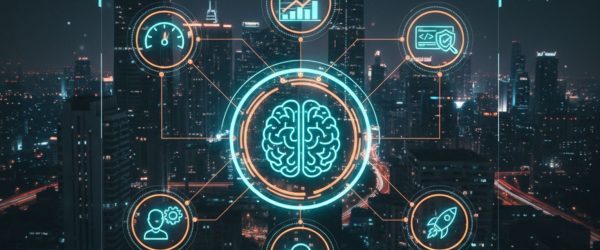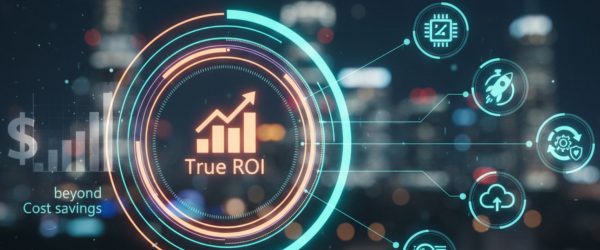Introduction
For years, businesses have relied on traditional automation—rules-based workflows, scripts, and bots—to reduce costs and improve efficiency. While this approach works for repetitive and structured tasks, it often falls short in today’s dynamic, customer-driven environment.
Enter Agentic AI—a new wave of intelligent, goal-driven AI that doesn’t just follow instructions but actively plans, adapts, and executes tasks across systems to achieve desired outcomes.
This blog explores the difference between traditional automation vs. agentic AI, why it matters for your business, and how you can leverage it to improve customer experience, streamline operations, and maximize ROI.
Traditional Automation: Where It Works—and Where It Fails
Traditional automation uses predefined rules and workflows. It is highly effective for:
- Repetitive tasks (e.g., invoice processing, data entry).
- Standard customer interactions (FAQs, password resets).
- Structured, predictable processes.
🔴 The challenge: Automation is brittle. When data is unstructured or a customer request falls outside the script, bots often fail—leading to frustration, escalations, and inefficiencies.
👉 According to Salesforce’s 2024 State of Service report, more than 80% of service leaders said automation has improved efficiency, but customer expectations continue to rise—making static automation insufficient.
What Is Agentic AI?
Agentic AI refers to AI systems that act like agents—they can:
- Understand a goal or intent.
- Plan multi-step actions to achieve it.
- Call APIs, access systems, and adapt in real-time.
- Verify outcomes and self-correct when needed.
Unlike traditional automation, agentic AI is adaptive and context-aware. For example, instead of just logging a support ticket, an agentic AI can:
- Understand the customer’s problem.
- Check warranty information in the CRM.
- Trigger a replacement order in the ERP.
- Send proactive updates to the customer.
📊 McKinsey reports that 72% of organizations were already adopting AI in 2024, and the next wave of adoption is centered on AI agents that integrate planning, memory, and action.
Agentic AI vs Traditional Automation: Key Differences
| Aspect | Traditional Automation | Agentic AI |
| Logic | Rules, scripts, static workflows | Goal-driven, adaptive, multi-step |
| Flexibility | Works only in predictable environments | Handles unstructured + dynamic tasks |
| Value Delivered | Cost reduction, efficiency | Efficiency + revenue growth + better CX |
| Use Case Fit | Data entry, RPA, FAQ bots | Customer service resolution, claims handling, sales automation |
Why Businesses Should Care
- Improved Customer Experience
- Agentic AI delivers resolution, not just response—boosting CSAT and retention.
- Example: A telecom company using AI agents can resolve billing issues end-to-end instead of bouncing customers across departments.
- Operational Efficiency at Scale
- Traditional automation cuts costs; agentic AI improves productivity and quality simultaneously.
- IBM found that 42% of enterprises have already deployed AI, and another 40% are experimenting—indicating rapid scaling.
- Revenue Growth
- Agents can enrich leads, qualify prospects, and even trigger quotes or demos automatically—accelerating sales cycles.
- Future-Proofing
- With Forrester predicting that 67% of decision-makers will increase generative AI budgets in 2025, businesses adopting agentic AI now will gain an early advantage.
Real-World Use Cases of Agentic AI
- Customer Support: Automating refunds, warranty checks, and appointment scheduling.
- Financial Services: Assisting with KYC/AML investigations by gathering and analyzing data.
- Sales & Marketing: Automating lead qualification and personalization campaigns.
- Operations: Coordinating tasks across supply chain, HR, and IT systems.
Key Considerations for Businesses
While the potential is huge, businesses must adopt responsible AI practices:
- Implement governance frameworks like NIST AI RMF for risk management.
- Ensure human oversight for high-stakes decisions.
- Track KPIs such as resolution rate, customer satisfaction, and compliance metrics to prove ROI.
Conclusion
Traditional automation was the foundation of digital efficiency. But in today’s competitive, customer-first world, Agentic AI is the differentiator. It not only automates tasks but also thinks, acts, and adapts—delivering measurable business outcomes.
👉 Companies that adopt agentic AI now will see faster ROI, stronger customer relationships, and a competitive edge in the market.
If your business is exploring next-generation automation, our team can help you design, implement, and scale agentic AI solutions tailored to your workflows.
📩 Contact us today to learn how agentic AI can transform your operations.







